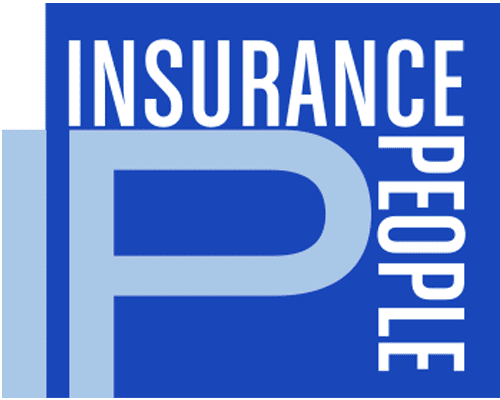Welcome to Work Comp Wednesdays! Insurance People is the industry-leader in North Carolina workers’ compensation insurance. Each week, our team takes a frequently asked question and expands on the issue for our clients, prospective clients, and community members to better understand the confusing nature of Work Comp.
What is OSHA’s new National Emphasis Program (NEP) for COVID-19? What are the implications for businessowners? What industries will be targeted by OSHA CSHOs?
Background:
On March 12, 2021, the Occupational Health and Safety Administration (OSHA) issued a new National Emphasis Program (NEP) to focus OSHA enforcement efforts related to Coronavirus Disease 2019 (COVID-19). The Federal Direction explains that the NEP is designed, “… to ensure employees in high-hazard industries are protected from the hazard of contracting SARS-CoV-2… by adding a component that targets specific high-hazard industries or activities where this hazard is prevalent.” In addition, the NEP includes an added focus to ensure that workers are protected from retaliation. The Direction is effective immediately and will last no more than 12 months.
Key Take-Aways:
- NEP – Goal: The goal of this NEP is to significantly reduce or eliminate worker exposures to SARS-CoV-2 by targeting industries and worksites where employees may have a high frequency of close contact exposures and therefore, controlling the health hazards associated with such exposures. This goal will be accomplished by a combination of inspection targeting, outreach to employers, and compliance assistance.
- NEP – Industries of Focus: The NEP will generate two Master Lists for site selection.
- Master List #1: Primarily targets the following industries derived from a review of OSHA’s enforcement activities in 2020:
- 621111 – Offices of Physicians
- 621210 – Offices of Dentists
- 621610 – Home Health Care Services
- 621910 – Ambulance Services
- 622110 – General Medical and Surgical Hospitals
- 622210 – Psychiatric and Substance Abuse Hospitals
- 622310 – Specialty Hospitals
- 623110 – Nursing Care Facilities
- 623210 – Residential Intellectual and Development Disability Facilities
- 623311 – Continuing Care Retirement Communities
- 623312 – Assisted Living Facilities for the Elderly
- 311612 – Meat Processed from Carcasses
- 311611 – Animal (except Poultry) Slaughtering
- 311615 – Poultry Processing
- 445110 – Supermarkets and Other Grocery (except Convenience) Stores
- 452112 – Discount Department Stores
- 493110 – General Warehousing and Storage
- 561320 – Temporary Help Services
- 722511 – Full Service Restaurants
- 722513 – Limited-Service Restaurants
- 922140 – Correctional Institutions
- Master List #1: Primarily targets the following industries derived from a review of OSHA’s enforcement activities in 2020:
-
- Master List #2: Primarily targets the industries in Master List #1, along with the following industries with elevated illness rates revealed from CY 2020 Form 300A data:
- 11XXXX – Agriculture, Forestry, Fishing, and Hunting
- 236XXX – Construction of Buildings
- 237XXX – Heavy and Civil Engineering Construction
- 238XXX – Specialty Trade Contractors
- 311XXX – Food Manufacturing
- 3121XX – Beverage Manufacturing
- 321XXX – Wood Product Manufacturing
- 322XXX – Paper Manufacturing
- 32412X – Asphalt Paving, Roofing, and Saturated Materials Manufacturing
- 32419X – Other Petroleum and Coal Products Manufacturing
- 326XXX – Plastics and Rubber Product Manufacturing
- 327XXX – Nonmetallic Mineral Product Manufacturing
- 331XXX – Primary Metal Manufacturing
- 332XXX – Fabricated Metal Product Manufacturing
- 333XXX – Industrial Machinery Manufacturing
- 334XXX – Computer and Electronic Product Manufacturing
- 335XXX – Electrical Equipment, Appliance, and Component Manufacturing
- 336XXX – Transportation Equipment Manufacturing
- 33711X – Wood Kitchen Cabinet and Countertop Manufacturing
- 3399XX – Other Miscellaneous Manufacturing
- 44422X – Nursery, Garden Center, Farm Supply Stores
- 445XXX – Additional Food and Beverage Stores
- 4523XX – General Merchandise Stores, including Warehouse Clubs/Supercenter
- 4851XX – Urban Transit Systems
- 4852XX – Interurban and Rural Bus Transportation
- 4854XX – School and Employee Bus Transportation
- 485991 – Special needs Transportation
- 491XXX – Postal Service
- 54142X – Industrial Design Services
- 811219 – Other Electronic and Precision Equipment Repair and Maintenance
- 81131X – Commercial and Industrial Machinery and Equipment Repair and Maintenance
- Master List #2: Primarily targets the industries in Master List #1, along with the following industries with elevated illness rates revealed from CY 2020 Form 300A data:
- NEP – Inspections:
- Some establishments selected for inspection under this NEP may also be selected under other NEPs, LEPs, or under the current Site Specific Targeting (SST) Plan and the Inspection Scheduling for Construction. I
- If an establishment is selected for an inspection under this NEP and is also selected under the current SST Plan, then, whenever possible, NEP and SST plan inspections should be conducted concurrently.
- NEP – Inspection Procedures:
- At the opening conference, the CSHO will verify the correct NAICS code for the establishment with the employer and determine whether work practices that may result in worker exposures to SARS-CoV-2 are conducted at the facility or worksite. The CSHO shall review the establishment’s injury and illness logs (OSHA 300 and OSHA 300A) for calendar years 2020 and 2021 to date to identify work-related cases of COVID-19.
- The CSHO may choose to verify the employer’s assertions regarding workplace conditions or possible existence of worker exposures to SARS-CoV-2 by interviewing employee(s) at the site.
- All health hazards observed in the course of any inspection conducted under this NEP shall be appropriately addressed and may be referred for a later inspection as resources permit.
- During inspections, where safety violations have also been alleged or when they are observed in plain view during the walkaround, CSHOs must address and cite where appropriate.
- NEP – Citation Guidance:
- To the extent possible, inspections should be conducted in a manner to achieve expeditious issuance of COVID-19-related citations and abatement.
How to Prepare:
If you are an employer in a targeted industry, please consider the following recommendations:
- Gather and review all OSHA logs (OSHA 300, 300A, 301) and Safety Records for accuracy and completeness, especially for work-related COVID-19 cases.
-
- For more information on how to record a work-related COVID-19 infection, please contact Mitch Kaufmann for the OSHA Recordkeeping Compliance Guidebook.
- Review the COVID-19 Enforcement Response Plan (ERP) for instructions and guidance on how Compliance Safety and Health Officers (CSHOs) will handle COVID-19 related complaints, referrals, and inspections.
For more information on the Federal OSHA NEP for COVID-19, please click here.
OSHAlogs.com
If you do not have an Injury and Illness Recordkeeping Software to maintain your OSHA 300 Data, please consider applying for a complimentary account with OSHAlogs.com. OSHAlogs is a secure, web-based application that enables employers to create each state’s First Report of Injury, track Injuries, print all required OSHA reports, and view injury metrics in real-time. For more information, please click here!
For access to a complimentary OSHAlogs account, please contact Mitch Kaufmann to complete the 1-page onboarding application.

